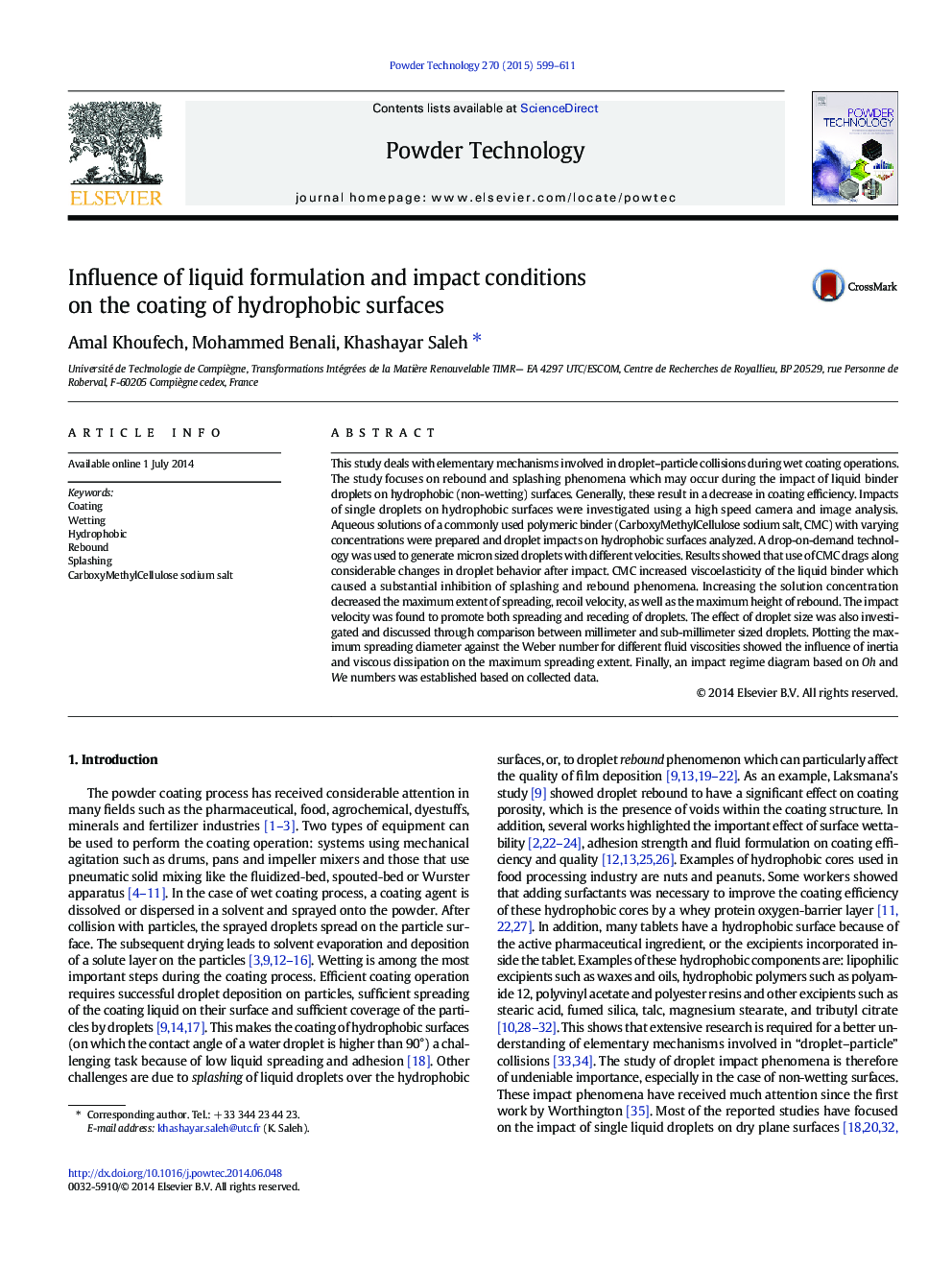| Article ID | Journal | Published Year | Pages | File Type |
|---|---|---|---|---|
| 235924 | Powder Technology | 2015 | 13 Pages |
•Adding CMC polymer into water inhibits droplet rebound and splashing phenomena.•Increasing CMC solution concentration decreases the maximum extent of spreading.•Recoil velocity and maximum height of rebound decrease for a higher viscosity.•Higher impact energy promotes both drop spreading and receding and droplet breakup.•Viscous dissipation during droplet evolution decreases when shear rate increases
This study deals with elementary mechanisms involved in droplet–particle collisions during wet coating operations. The study focuses on rebound and splashing phenomena which may occur during the impact of liquid binder droplets on hydrophobic (non-wetting) surfaces. Generally, these result in a decrease in coating efficiency. Impacts of single droplets on hydrophobic surfaces were investigated using a high speed camera and image analysis. Aqueous solutions of a commonly used polymeric binder (CarboxyMethylCellulose sodium salt, CMC) with varying concentrations were prepared and droplet impacts on hydrophobic surfaces analyzed. A drop-on-demand technology was used to generate micron sized droplets with different velocities. Results showed that use of CMC drags along considerable changes in droplet behavior after impact. CMC increased viscoelasticity of the liquid binder which caused a substantial inhibition of splashing and rebound phenomena. Increasing the solution concentration decreased the maximum extent of spreading, recoil velocity, as well as the maximum height of rebound. The impact velocity was found to promote both spreading and receding of droplets. The effect of droplet size was also investigated and discussed through comparison between millimeter and sub-millimeter sized droplets. Plotting the maximum spreading diameter against the Weber number for different fluid viscosities showed the influence of inertia and viscous dissipation on the maximum spreading extent. Finally, an impact regime diagram based on Oh and We numbers was established based on collected data.
Graphical abstractFigure optionsDownload full-size imageDownload as PowerPoint slide
